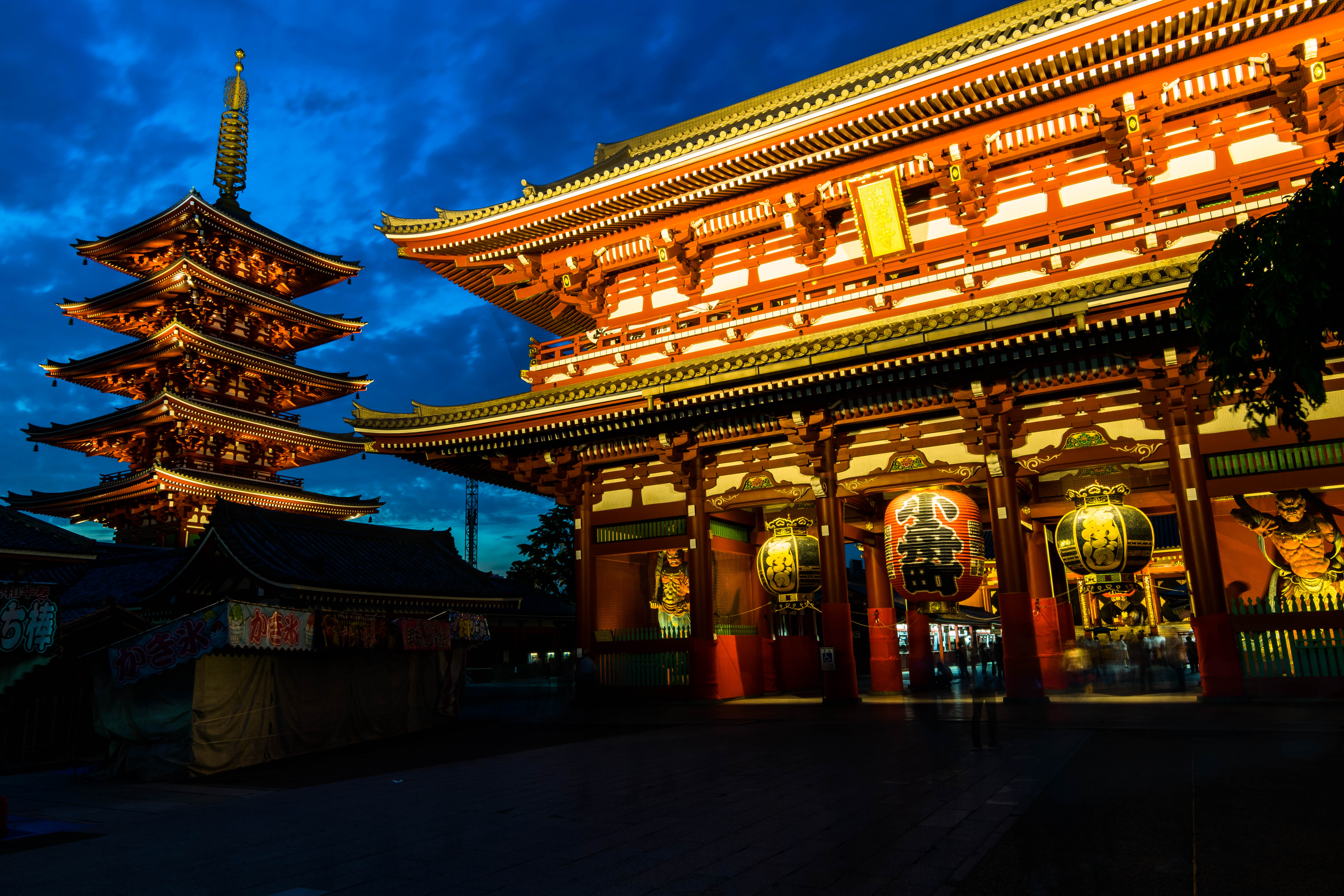
Chances are if you visit Tokyo, you will undoubtedly visit Asakusa and the very colorful Senso-ji Temple. And though it is crowded, it features a look and feel of a Tokyo that got stuck in time. It is quaint. It is bustling. And it has a little bit of everything for a traveler to experience.
I got the chance to shoot Asakusa myself through a promotion for work. I went there with our web designer to get a few shots worthy enough to appear on a landing page to promote tours to the area. For the first time ever, I felt the pressure to perform and produce results. And it did take a couple hundred shots to come up with even one I was satisfied with. But if I have learned nothing else taking pictures, it’s that photography is patience.
Waiting out some overcast weather, the sky opened up right around a golden hour and gave me a very brief window of time to run through the temple for the third or fourth time that day to get these shots.



There are two sets of gates leading to the main temple, separated by a long strip of shops called Nakamise. Inside the temple grounds are the main hall and five-story pagoda. The temple was built to enshrine the goddess of mercy, Kannon, after two brothers fished a statue of her out of the nearby Sumida River in the 7th century. Initially they threw it back in the river, but it returned to them, signaling to them that they should probably build a temple there. The current buildings are all reconstructions due to them being destroyed in the war.
Today guests can get their fortune or o-miyakuji taken by paying a small fee and shaking a metal box until a numbered stick pops out. That number stick corresponds with a wooden drawer that contains a paper with a fortune on it. Good fortunes are kept, while bad fortunes are tied to a rack.
Leading up to the steps of the main hall of the temple is a large urn with burning incense. Guests bathe in the smoke given off by the incense by waving it towards their head. This is believed to have a healing effect and a way to gain wisdom, which is why many students will go here to wave smoke on themselves before a big test. The manji symbol on the side of the incense is a very common Buddhist symbol in Japan, emphasizing the harmony in the opposites of light and darkness, heaven and earth.


On the main temple grounds is a beautifully ornate pagoda. It’s not a feature of the temple that can be entered, but it is nonetheless something to be marveled at.
A popular activity in Asakusa for both Japanese and foreign visitors is to dress in kimono before sightseeing. Rental shops are available for such guests who are looking to add something a little special to their posed photos.
After getting the above shots, the clouds blanketed the sky once more. I hoped that once the sun went down I could make them move a bit with a few long exposures. Patiently setting up my tripod in a few different spots, I felt relief and excitement as the following shots came out. Patience pays off.



Though it took quite a few tries throughout the day, I came out with some pictures that we would be able to use for the promotion page. The results of that effort are featured on the final landing page here.
Asakusa really needs no introduction and is almost obligatory as a must-visit spot in Tokyo. But I am glad I get to introduce it here anyway. It has the tradition and old charm that you may expect from temples in Kyoto, while being very accessible from the city center. It is a popular spot, but definitely deserving of a visit.



One thought on “Senso-ji Temple, Asakusa”
Absolutely amazing photos! Your patience certainly paid off!
Comments are closed.